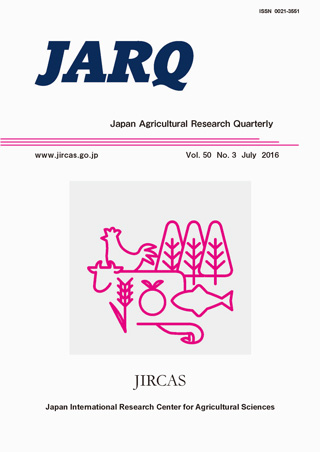In 2004, an outbreak of Rhizoctonia aerial blight on soybeans planted after rice in paddy fields in Hiroshima Prefecture, Japan was also associated with delayed leaf senescence (DLS, or green stem/bean syndrome). The isolated Rhizoctonia solani was characterized as anastomosis group AG-1 IA, identical to that of the R. solani causing rice sheath blight. The relationship between aerial blight and soybean DLS, which are also problems in Japan, was examined through field inoculation testing of the rice sheath blight pathogen on soybean plants. In some plots, fungicides (azoxystrobin, flutolanil or validamycin A) were sprayed on the soybean foliage after inoculation, and some plots received frequent overhead irrigation to promote disease. There was a high incidence of the disease and DLS in the inoculated and frequently irrigated plots without the application of fungicide. Without fungicides,
the yield from diseased soybeans was 12-35% lower than that in noninoculated control plots. The fungicide sprays described above were effective in controlling DLS and yield loss from the disease. We thus clearly showed that Rhizoctonia aerial blight of soybean caused by the rice sheath blight pathogen is at least one of the causes of soybean DLS. Frequent rainfall is likely to promote the disease and resulting DLS.

